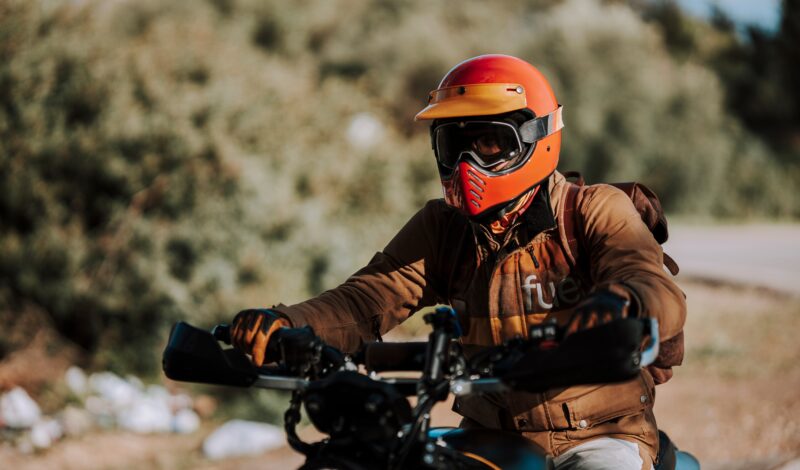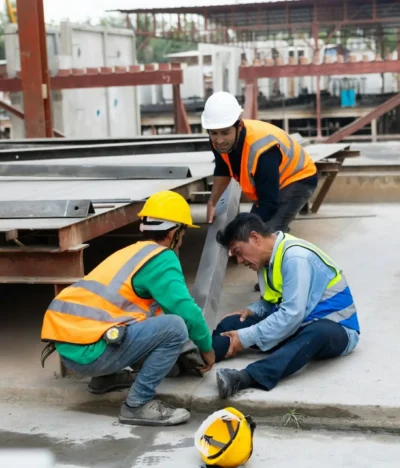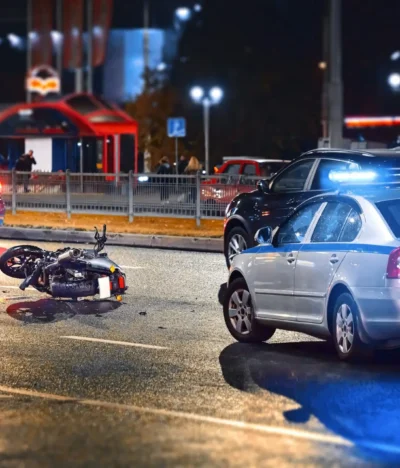Brought to You by Personal Injury Pros | No Fee Until We Win
Las Vegas offers motorcyclists the perfect blend of city lights and desert highways, but it also presents unique challenges that can quickly turn dangerous. Whether you’re commuting, cruising the Strip, or heading out toward Red Rock, it’s important to ride smart, stay alert, and know the rules of the road.
As experienced motorcycle accident attorneys in Las Vegas, we’ve seen how fast things can go wrong. These tips are designed to help riders reduce risk and avoid the most common causes of motorcycle crashes across Southern Nevada.
Key Safety Takeaways for Las Vegas Riders
- Obey all local traffic laws and regulations, especially those specific to motorcyclists.
- Make yourself as visible as possible—during the day and at night.
- Maintain your motorcycle for optimal performance and safety.
- Never ride under the influence of alcohol or drugs.
- Take a certified motorcycle safety course to enhance your skills.
- Consult a motorcycle accident lawyer in Las Vegas immediately if you’ve been injured in a crash.
1. Know Nevada Motorcycle Laws
Daytime Headlight Requirement
In Nevada, motorcycles must use headlights during the day, even in clear weather. This isn’t optional—it’s a legal requirement that helps drivers spot motorcycles in bright sun, shade, or urban glare.
If you’re involved in a crash and your headlight wasn’t on, it could impact your personal injury claim and how fault is assessed.
Rider Tip: Make it a habit—key in, headlight on. Visibility saves lives.
2. Prioritize Helmet Safety
Nevada Helmet Law
Nevada requires all motorcycle operators and passengers to wear DOT-compliant helmets, regardless of age or riding experience. That helmet could be the difference between walking away and a life-altering injury.
DOT Compliance
Look for the DOT sticker—helmets must meet federal crash impact standards. Novelty or non-approved helmets offer little to no protection and could put your health and claim at risk.
Rider Tip: A good helmet isn’t just about the law—it’s about survival.
3. Understand Passenger Rules
Not every rider is legally allowed to carry passengers. Here’s what Nevada law says:
- Permit Holders: No passengers allowed.
- Riders under 18: Must have a full Class M endorsement. The passenger must be over 8 years old and wear a helmet.
- Motorcycle Setup: Your bike must have a proper passenger seat, footrests, and handholds.
Rider Tip: Don’t ride with two if your motorcycle isn’t built for two. Improperly carrying a passenger could lead to liability in the event of an accident.
4. Take a Motorcycle Safety Course
Over 90% of riders involved in serious crashes have never taken a certified riding course. Whether you’re new to motorcycles or just want to sharpen your skills, Nevada offers excellent rider education options:
- Introductory Rider Course (BRC) – For beginners. Covers operation, visibility, and traffic strategies.
- Intermediate & Advanced Courses – For experienced riders looking to improve emergency braking, hazard avoidance, and high-speed handling.
Many courses are approved for license testing and insurance discounts.
Rider Tip: Training boosts reaction time, confidence, and ability to avoid high-risk situations.
5. Ride Defensively—Always
Maintain Space
Keep a safe distance from vehicles around you. This gives you time to react and avoid unexpected braking or swerves, especially on I-15 or the 215 during rush hour.
Practice Emergency Braking
Find a safe space to practice quick stops using both brakes. This skill can prevent front-end collisions and serious injury.
Scan Constantly
Always watch several cars ahead, not just the one in front. Look for debris, sudden stops, lane changes, and pedestrians stepping out.
Rider Tip: Assume other drivers do not see you. Ride like you’re invisible.
6. Stay Visible at All Times
In Las Vegas, visibility is everything. Distracted drivers, tourist traffic, and unpredictable intersections mean riders must be proactive.
- Wear high-visibility gear.
- Add reflective elements to your helmet or jacket.
- Use hand signals and the horn when appropriate.
- Never ride in a vehicle’s blind spot.
- Use high beams during the day if appropriate.
Legal Note: Visibility issues often play a key role in motorcycle injury claims in Las Vegas. Being seen can protect your life—and your case.
7. Never Ride Impaired
Riding under the influence of alcohol, marijuana, or prescription drugs is not only illegal—it’s deadly. Impairment dramatically reduces coordination, reaction time, and judgment.
Nevada DUI Penalties for Motorcyclists
- Jail time (even for a first offense)
- Fines and license suspension
- Ignition interlock devices
- Insurance consequences
- Increased liability in accident-related personal injury cases
Rider Tip: Use Uber, Lyft, or a designated driver. Never take chances with impaired riding.
8. Keep Your Bike Road-Ready
Regular motorcycle maintenance is non-negotiable. A loose chain, worn brakes, or bald tires can quickly lead to serious crashes.
Pre-Ride Checklist:
- Tire pressure and tread
- Brake responsiveness
- Headlights, brake lights, turn signals
- Chain/belt tension
- Mirrors and a horn
Scheduled Maintenance Matters
- Oil change every 3,000 miles
- Brake fluid, spark plugs, and suspension checks every 6,000 miles.
- Full safety inspection annually
Rider Tip: If your motorcycle isn’t road-ready, don’t ride. Mechanical failure is a preventable crash risk and may limit your legal recovery if something goes wrong.
9. Communicate with Turn Signals
Motorcycle crashes often occur at intersections or during lane changes. Explicit signaling prevents confusion and keeps you safe.
- Always signal—well in advance—before turning or changing lanes.
- Cancel your signal after each turn to avoid miscommunication.
- Check your signal bulbs regularly.
10. Know Your Surroundings
Las Vegas traffic patterns shift fast. From The Strip to Summerlin, you need to anticipate how other drivers—and pedestrians—might act.
- Monitor blind spots
- Anticipate sudden stops or U-turns.
- Adjust speed for road conditions.
- Watch for tourists unfamiliar with local traffic laws.s
Rider Tip: Surrounding awareness and intelligent positioning can reduce your crash risk by more than 50%.
Been in a Motorcycle Accident in Las Vegas?
Even if you followed all the rules, accidents can happen, especially with distracted or reckless drivers. If you’ve been injured in a motorcycle accident, our team is here to help.
As experienced Motorcycle Accident Lawyers in Las Vegas, we will:
- Investigate the crash
- Protect your rights under Nevada law.
- Handle all negotiations with the insurance company.s
- Fight for maximum compensation for medical bills, lost income, and pain and suffering.
✅ Free Consultation
✅ No Win, No Fee
✅ Real Answers About Your Case
📞 Contact Personal Injury Pros today and take the first step toward recovery.
Frequently Asked Questions
Do I need to wear a helmet while riding in Las Vegas?
Yes. Nevada law requires all motorcycle riders and passengers to wear a DOT-approved helmet—no exceptions.
Is lane splitting legal in Las Vegas?
No. Lane splitting is illegal in Nevada. Riders must stay in one lane and follow standard lane-use rules.
Can I carry a passenger on my motorcycle?
Only if you have a Class M license and your motorcycle has a proper seat, footrests, and handholds. Learner’s permit holders may not carry passengers.
What should I do after a motorcycle crash in Las Vegas?
Call emergency services, document the scene, and contact a motorcycle accident lawyer in Las Vegas. Avoid speaking to insurance adjusters before legal counsel.
What if I were partially at fault?
Nevada follows a 51% modified comparative negligence rule. You may still recover damages if you’re not more than 50% responsible for the crash.








